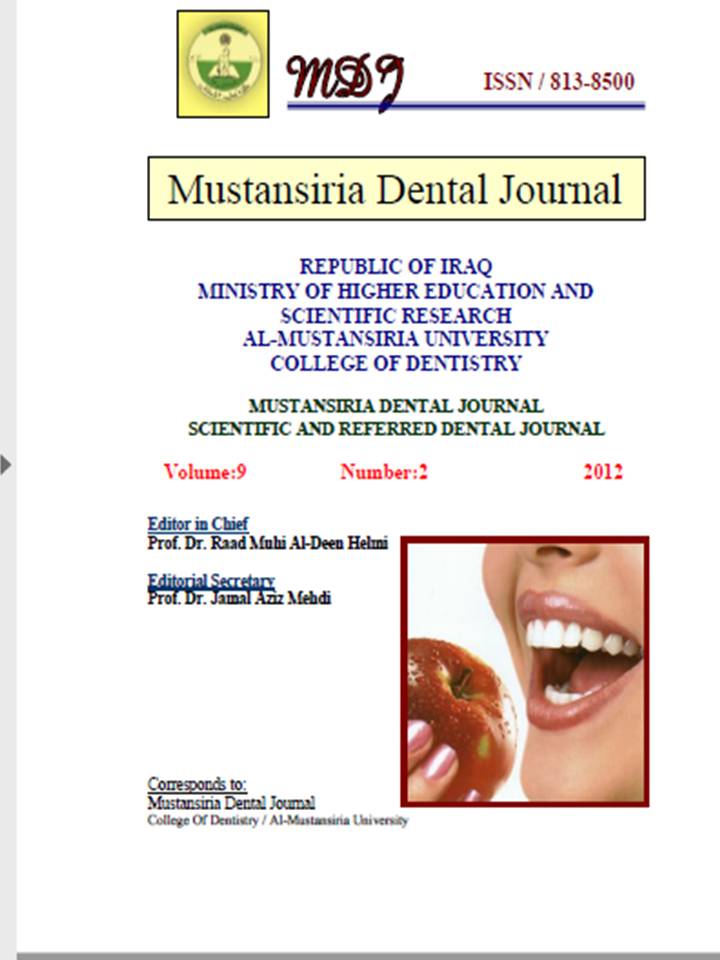Comparison of apical sealability of three obturation techniques (an in vitro study)
DOI:
https://doi.org/10.32828/mdj.v9i2.254Keywords:
Key wards: apical leakage, dye penetration, Easy & quick master obturator, root canal obturationAbstract
The aim of this study was to evaluate the sealing ability and the time required to
complete obturationof three different obturation techniques.The palatal roots of sixty
maxillary first molar teeth were selectedfor this study. The root canals prepared using
ProFile rotary instruments to an apical dimension of size 40 (.06 taper). Thespecimens
were then randomly divided into 3 experimental groups (20 sample of each) and filled
with gutta-percha and sealer byusing either cold lateral compaction, Thermafil, or the
Easy & Quick Master system.For the first parameter(Time of obturation), the results
showed that Thermafil technique required the least time to complete obturation and it
was significantly lower than other twogroups.The second measurement
(Microleakage) showed that the lateral condensation technique leaked apically and
significantly higher than other test groups, while the Thermafil group exhibited the
least value of apical microleakage.

Downloads
Published
Issue
Section
License
The Journal of Mustansiria Dental Journal is an open-access journal that all contents are free of charge. Articles of this journal are licensed under the terms of the Creative Commons Attribution International Public License CC-BY 4.0 (https://creativecommons.org/licenses/by/4.0/legalcode) that licensees are unrestrictly allowed to search, download, share, distribute, print, or link to the full texts of the articles, crawl them for indexing and reproduce any medium of the articles provided that they give the author(s) proper credits (citation). The journal allows the author(s) to retain the copyright of their published article.
Creative Commons-Attribution (BY)








